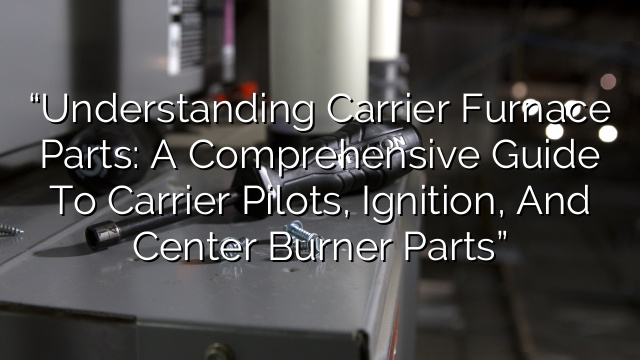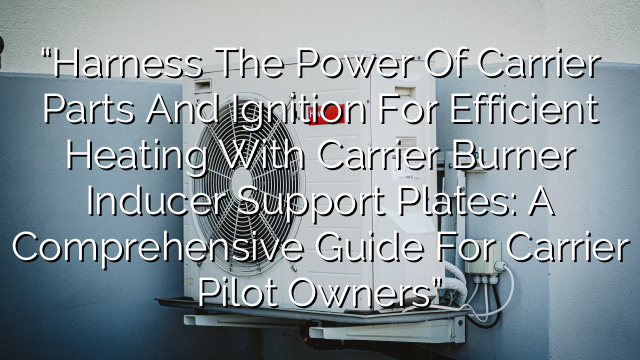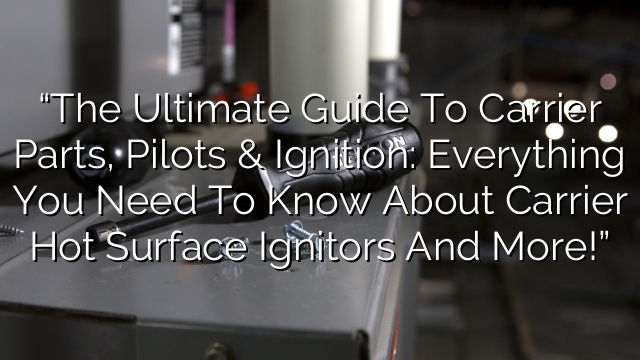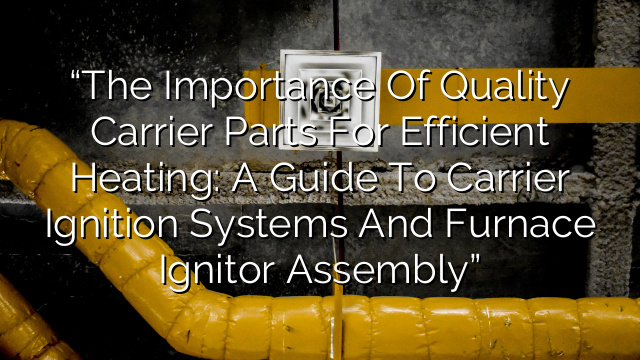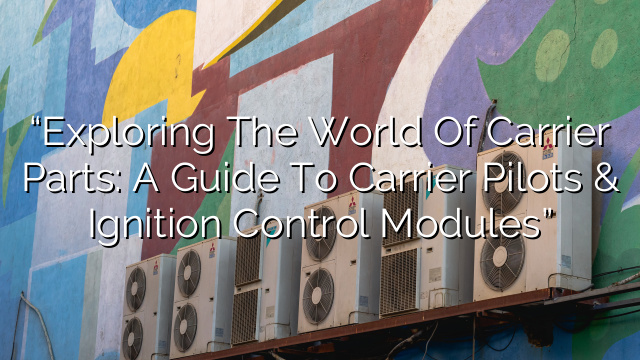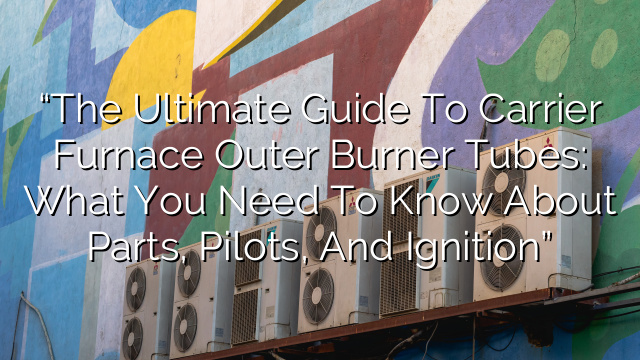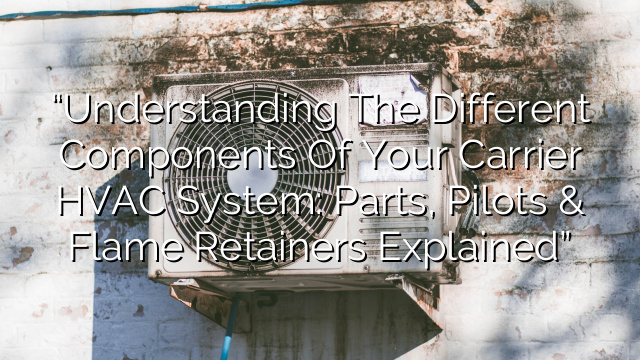Understanding Carrier Furnace Parts: A Comprehensive Guide to Carrier Pilots, Ignition, and Center Burner Parts
When it comes to maintaining your Carrier furnace, understanding the various parts and components is crucial. In this comprehensive guide, we will dive deep into Carrier pilots, ignition systems, and center burner parts, providing you with the knowledge you need to keep your furnace running smoothly.
Carrier Pilots
The pilot light is a small, continuous flame that serves as the ignition source for your furnace. Carrier pilots are designed to be reliable and energy-efficient, providing you with consistent heating performance. Understanding the different types of Carrier pilots can help you troubleshoot any issues you may encounter.
- Standing Pilot: This traditional pilot light stays lit constantly, even when the furnace is not in use. It is typically found in older furnace models and can be a potential source of energy waste.
- Intermittent Pilot: In newer models, Carrier has introduced intermittent pilots, which only ignite during the heating cycle. This type of pilot light is more energy-efficient, as it eliminates the need for a constant flame.
- Hot Surface Igniter (HSI): Some Carrier furnaces feature a hot surface igniter instead of a pilot light. This igniter works by heating up and igniting the gas as it passes over it. HSIs are more reliable and durable than traditional pilot lights.
Ignition Systems
Carrier furnaces use different ignition systems to start the heating process. Understanding these systems will help you diagnose and fix any ignition-related issues.
- Direct Spark Ignition (DSI): This ignition system uses an electrical spark to ignite the gas burners. It is commonly found in newer Carrier furnace models.
- Hot Surface Ignition (HSI): As mentioned earlier, some Carrier furnaces use a hot surface igniter to ignite the gas burners. This system is reliable and eliminates the need for a pilot light.
- Intermittent Pilot Ignition (IPI): In furnaces with intermittent pilots, an IPI system is used to ignite the burners. This system is energy-efficient and provides reliable ignition.
Center Burner Parts
The center burner is responsible for distributing the ignited gas evenly throughout the furnace’s heat exchanger. Understanding the different parts of the center burner will help ensure efficient and even heat distribution.
- Burner Assembly: The burner assembly consists of metal tubes that distribute the gas across the burner surface. It is important to keep the burner assembly clean and free from debris to maintain proper combustion.
- Orifice: The orifice controls the flow of gas into the burner assembly. It is crucial to ensure that the orifice is correctly sized for your furnace to prevent gas flow issues.
- Burner Flame Sensor: The burner flame sensor detects the presence of a flame. If the sensor fails or becomes dirty, it can lead to ignition issues or an interruption in the furnace’s operation.
- Burner Manifold: The burner manifold is a chamber where the gas mixes with air before entering the burner assembly. It is essential to ensure that the burner manifold is free from obstructions for proper gas flow.
Proper maintenance and regular inspection of these center burner parts can help prevent breakdowns and ensure optimal furnace performance.
Frequently Asked Questions (FAQ)
Q: Can I replace a standing pilot with an intermittent pilot in my older Carrier furnace?
A: While it is technically possible to replace a standing pilot with an intermittent pilot in some older Carrier furnace models, it is not always recommended. It requires expertise and may require modifications to the furnace. Consult a professional HVAC technician before making any modifications.
Q: How often should I clean my Carrier furnace’s burner assembly?
A: It is recommended to clean the burner assembly of your Carrier furnace annually or as needed. If you notice any signs of dirt, debris, or inefficient combustion, it is essential to clean the burner assembly promptly. It is best to consult the furnace’s maintenance manual or contact a professional technician for guidance.
Q: What should I do if the pilot light on my Carrier furnace keeps going out?
A: If the pilot light on your Carrier furnace keeps going out, it may indicate an underlying issue. First, make sure that the gas supply to the furnace is not interrupted. Check for any obstructions or dirt in the pilot light orifice. It is also essential to inspect the thermocouple or flame sensor for proper functionality. If the issue persists or you are unsure, contact a qualified HVAC technician for assistance.
Q: How do I know if the burner flame sensor in my Carrier furnace is faulty?
A: A faulty burner flame sensor can cause the furnace to have trouble staying lit or result in frequent short cycling. If you suspect a faulty flame sensor, you can visually inspect it for any signs of corrosion or damage. However, for a more accurate diagnosis, it is recommended to consult a professional technician who can perform proper testing and replace the sensor if necessary.
Q: Can I clean the burner manifold in my Carrier furnace by myself?
A: Cleaning the burner manifold in your Carrier furnace is a sensitive task that requires expertise. It is recommended to leave this task to a professional HVAC technician who can safely clean the manifold without causing damage to the furnace. Cleaning it improperly may lead to gas leaks or other hazardous situations.
By understanding the various parts and components of your Carrier furnace, you can ensure its smooth operation and address any issues that may arise. Regular maintenance and professional inspections are crucial for keeping your furnace in optimal condition. If you are ever unsure or uncomfortable performing any maintenance task, it is always best to consult a qualified HVAC technician.

